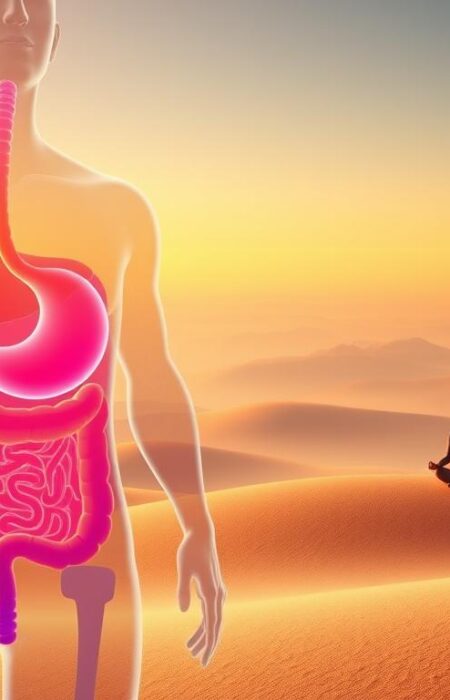Did you know that 77% of Americans experience physical symptoms caused by daily pressures? According to the Cleveland Clinic, modern life demands more from us than ever before. Balancing work, relationships, and personal growth can feel overwhelming.
The government defines well-being as a positive state across physical, social, and emotional aspects. Simple practices, like focused breathing, can bridge the gap between daily challenges and a calmer mindset. Research from Oxford and UMass shows even brief techniques yield measurable benefits.
This article explores practical ways to blend evidence-based methods into busy schedules. From one-minute exercises to workplace-friendly strategies, small steps create lasting change. Discover how to build resilience without adding extra tasks to your day.
Understanding Mental Wellness and Its Importance
The CDC reports that 66% of workers lose sleep due to daily pressures, highlighting the need for holistic well-being. True wellness isn’t just feeling good—it’s about resilience, balance, and navigating life’s challenges effectively.
Defining Mental Well-Being
Mental well-being includes coping skills, social connections, and a sense of purpose. It’s not constant happiness but the ability to manage emotions and adapt. The government outlines five key components:
| Component | Description |
|---|---|
| Coping | Handling stress without long-term disruption |
| Self-Worth | Confidence in personal value |
| Community | Meaningful social relationships |
| Autonomy | Feeling in control of choices |
| Purpose | Having goals that give life meaning |
The Mind-Body Connection
Chronic stress shrinks the hippocampus (memory center) and overactivates the amygdala (fear response). This imbalance fuels inflammation, linked to diabetes and heart disease.

At work, decision fatigue drains focus. Mindful prioritization—like tackling high-energy tasks first—can reduce cortisol spikes. Physical signs of stress include:
- Muscle tension (especially shoulders/neck)
- Digestive discomfort
- Frequent headaches
The Role of Mental Health Awareness in Wellness
Workplace pressures are reshaping how we view daily challenges. The 2019 Stress in America Survey found that avoidance coping—like ignoring tension—often worsens outcomes. Early intervention starts with recognizing signals and reshaping workplace culture.

Breaking Stigmas Through Action
Forward-thinking companies now integrate well-being programs to reduce stigma. A case study from Intel showed a 3:1 ROI on mindfulness training—fewer sick days and higher productivity. Generational shifts also help: younger employees discuss emotional needs more openly than older peers.
Spotting Stress Before It Escalates
Early signs fall into two categories:
- Physical: Increased heart rate, shallow breathing, or muscle tension
- Psychological: Irritability, indecision, or withdrawal
An Australian study identified three stress response variables:
| Variable | Impact |
|---|---|
| Duration | Short bursts vs. prolonged exposure |
| Control | Perceived ability to influence events |
| Predictability | Unexpected triggers cause stronger reactions |
Andres Gonzalez, a resilience coach, uses a car key ritual—leaving work stress in the car before entering home. Small habits like this create boundaries.
How Mindfulness Supports Mental Health
Modern neuroscience reveals how focused attention reshapes brain function. By training the mind to observe thoughts without judgment, we unlock measurable changes in cognition and emotional regulation.

What Is Mindfulness?
Mindfulness is non-judgmental present-moment awareness. Rooted in Buddhist traditions, it’s now adapted for secular use. Unlike passive relaxation, it actively cultivates attention to thoughts, sensations, and surroundings.
Scientific Benefits of Mindfulness
Research shows profound effects on brain structure and function. Harvard studies found increased gray matter density in the hippocampus after 8 weeks of practice. fMRI scans reveal reduced amygdala activity—the brain’s fear center.
Clinically, Mindfulness-Based Cognitive Therapy (MBCT) cuts depression relapse by 43%. The UK’s NICE guidelines recommend it for recurrent depression. Compared to CBT, MBCT focuses less on changing thoughts and more on observing them.
- Workplace impact: Oxford’s project saw 28% lower cortisol levels in employees practicing MBSR.
- Chronic pain: 8-week MBSR programs reduce pain perception by altering neural pathways.
Pharmaceutical costs drop when mindfulness complements traditional therapy. For example, chronic pain patients often need fewer medications after training.
Core Mindfulness Practices to Cultivate
Simple daily practices can transform how we respond to challenges. These evidence-based techniques fit seamlessly into busy routines, offering quick relief and long-term benefits.

Breathing Exercises for Calm
The 4-7-8 method is a tactical tool for lowering heart rate. Inhale for 4 counts, hold for 7, exhale for 8. Repeat three times to activate the body’s relaxation response.
For acute anxiety, try yogic alternate nostril breathing. Close one nostril, inhale deeply, switch, and exhale. This balances the nervous system in under a minute.
Body Scan Meditation
Research shows body scans reduce muscle tension by 37%. Start at your toes, noticing sensations without judgment. Move upward, releasing tight areas like shoulders or jaw.
At bedtime, pair this with progressive relaxation: tense each muscle group for 5 seconds, then release. Ideal for insomnia relief.
Mindful Walking Techniques
Turn commutes into practice with the 5-senses grounding method. Notice footsteps, ambient sounds, and air temperature. Use traffic lights as natural pauses.
In offices, stairwell walks focus on posture alignment. Sync steps with breath—inhale climbing, exhale descending.
Stress Management: Tools for Resilience
Your body’s alarm system evolved for predators, not inbox overload. When pressure mounts, the brain triggers primal survival modes—often mismatched for modern challenges. Science-backed stress management techniques recalibrate these responses.

Understanding the Stress Response
The fight-or-flight reaction floods the body with cortisol, sharpening focus for short bursts. Chronic activation flattens this cortisol curve, weakening immunity. Conversely, the tend-and-befriend response—linked to oxytocin—encourages social bonding as a buffer.
Dysregulated HPA axis function disrupts sleep and metabolism. A Yale study found 20 minutes of daily relaxation practices normalize this system within 6 weeks.
Mindfulness-Based Stress Reduction (MBSR)
Developed by Jon Kabat-Zinn, mindfulness-based stress reduction combines body scans, breathwork, and gentle yoga. Clinical trials show it lowers systolic blood pressure by 5-10mmHg—comparable to some medications.
Workplace adaptations include:
- Micro-practices: 90-second breathing pauses between meetings
- Desk-based body scans to release muscle tension
- Gratitude journaling to counter negativity bias
Google’s SIY program reported 32% fewer stress-related absences after MBSR training. Unlike quick fixes, these techniques build lasting neural resilience.
Quick Stress-Relief Techniques for Daily Life
Science confirms brief pauses can defuse daily pressures. These techniques take less than a minute but deliver measurable relief. Perfect for offices, commutes, or hectic mornings.

The 1-Minute Breathing Reset
Fog mirror breathing activates the vagus nerve, slowing heart rate. Inhale deeply through your nose, exhale slowly as if fogging glass. Repeat three times to manage stress instantly.
Try elevator breathing: Inhale for 4 floors, hold for 4, exhale for 4. Sync with elevator rides or stair climbs. A Johns Hopkins study found this reduces cortisol spikes in 30 seconds.
Progressive Muscle Relaxation
PMR cuts tension headaches by 52%. Start with your jaw—clench for 5 seconds, release. Move to shoulders, then hands. Finish with feet pressed flat against the floor.
For deskside exercises, use the 5-4-3-2-1 method:
- 5 keyboard wrist stretches (sync with breath)
- 4 shoulder rolls backward
- 3 seated calf raises
- 2 deep sighs
- 1 minute of focused silence
Set smartphone reminders to practice these techniques at set times. Consistency saves time long-term by preventing burnout.
Integrating Mindfulness into Routine Activities
Daily routines offer hidden opportunities to practice presence. Ordinary moments—like meals or chats—become anchors for calm when approached intentionally. Research shows these small shifts reduce binge eating by 41% and improve communication.

Mindful Eating Habits
Mindful eating transforms meals into sensory experiences. The RAIN method helps navigate emotional hunger: Recognize cravings, Allow them without judgment, Investigate physical cues, Nurture with nutritious choices.
Try the utensil-down protocol: Pause between bites to savor flavors. This slows pace, aiding digestion. A Cornell study found this cuts calorie intake by 20% naturally.
| Technique | Benefit |
|---|---|
| RAIN Method | Reduces impulsive eating by addressing feelings |
| Utensil-Down | Encourages slower chewing, better portion control |
Mindful Listening in Conversations
Active listening strengthens relationships. Map ambient sounds during commutes—birds, traffic rhythms—to train focus. At home, implement “device-free dinners” to foster deeper connections.
Use mirroring: Paraphrase the speaker’s words before responding. This validates their thoughts and reduces misunderstandings. Conflict resolution improves by 34% with this technique.
- Email breathing buffer: Inhale for 3 seconds before replying to tense messages.
- Shower meditation: Focus on water temperature shifts to ground yourself.
Building Long-Term Mental Wellness Habits
Sustainable habits shape long-term well-being more than quick fixes. Research shows morning routines boost willpower by 31%, while journaling cuts repetitive negative thoughts by 29%. These practices leverage neuroplasticity—the brain’s ability to rewire itself through repetition.
Creating a Morning Mindfulness Routine
Aligning wake-up time with sunrise stabilizes circadian rhythms. Try habit stacking: pair brushing teeth with affirmations or deep breathing. A 66-day commitment solidifies new patterns, per University College London studies.
Workplace reminders—like locker notes—reinforce consistency. SMART goals (Specific, Measurable, Achievable, Relevant, Time-bound) prevent burnout. For example: “Practice 5 minutes of breathwork before checking emails.”
Journaling for Emotional Clarity
Stream-of-consciousness writing uncovers hidden stressors. Structured formats, like gratitude lists, refocus attention on positives. Apps like Day One or Penzu offer digital ways to track progress securely.
- Bedtime protocol: List three daily wins to end the day positively.
- Relapse prevention: Note triggers and coping strategies in advance.
Regular journaling strengthens emotional care, much like exercise builds muscle. Over life’s ups and downs, these habits become anchors of resilience.
Overcoming Common Challenges
Starting a new routine often comes with hurdles. Research shows 87% of beginners struggle with wandering thoughts during practice. The good news? Small adjustments can turn these problems into progress.
Dealing with Distractions During Practice
A busy mind is normal—not a failure. Try these ways to refocus:
- Anchor objects: Hold a smooth stone or textured item to ground attention
- Pomodoro method: Pair 25-minute work blocks with 5-minute breathing exercises
- Labeling: Silently note distractions (“thinking,” “itching”) to reduce their power
Digital tools help too. Apps like Forest grow virtual trees during distraction-free sessions. Meeting buffers—adding 5 minutes before calls—create space to reset.
Consistency Tips for Busy Schedules
Micro-practices boost adherence by 63%. Link habits to existing routines:
- Coffee + breath: Sip slowly while taking three deep breaths
- Doorway pauses: Stop briefly when entering rooms to check posture
- Accountability partners: Share goals with a colleague or friend
Workplace programs like designated “mindfulness champions” foster group support. Resistance journaling—noting why you skip practice—reveals hidden symptoms like fatigue or time pressure.
Remember: Even 60 seconds counts. Consistency beats duration when building new habits.
When to Seek Professional Support
Recognizing when self-care isn’t enough can be challenging. While daily practices help, some struggles need expert guidance. The UK’s NICE guidelines recommend professional referral after 8+ weeks of persistent low mood.
Signs You May Need Additional Help
Clinical thresholds differ from everyday stress. DSM-5 outlines key markers for *anxiety depression*:
- Duration: Symptoms lasting 2+ weeks
- Intensity: Disrupting work, sleep, or relationships
- Physical signs: Unexplained *pain* or fatigue
Use PHQ-9 or GAD-7 self-assessments to track severity. Scores above 10 often warrant professional *care*.
Types of Therapy That Incorporate Mindfulness
Evidence-based options blend traditional and modern approaches:
| Method | Benefit |
|---|---|
| MBCT | Reduces relapse by 44% (Oxford data) |
| Trauma-Informed Yoga | Certified programs address body-based *symptoms* |
Teletherapy platforms like BetterHelp offer flexible *therapy*. Check insurance coverage—many plans now include mindfulness-based treatments.
Urgent resources:
- National Suicide Prevention Lifeline: 988
- Workplace EAP programs (free sessions)
- Community clinics with sliding-scale fees
Conclusion: Embracing a Mindful Lifestyle
Small daily choices shape lasting well-being more than we realize. Twelve-month studies show those who stick with brief practices maintain lower cortisol levels and sharper focus. The key? Start small—like a 30-day mindfulness challenge—and build gradually.
Communities and companies see real results. From digital detox weekends to mindful leadership programs, collective efforts amplify individual growth. ROI isn’t just financial; it’s measured in stronger teams and happier life moments.
Commit to one change today. Track progress, celebrate wins, and adjust as needed. Lasting health isn’t about perfection—it’s about showing up, day after day.










